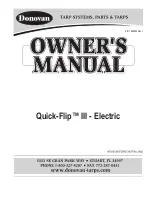
52
C
)
When conveying high and multi-piece piled goods, it is necessary to tilt the mast back
ward a little (if can tilt back) to stabilize the load, and should be careful specially.
When unloading the goods, it is necessary to descend carefully. If possible, tilt the mast
forward a little (or limited)in order to put ready the load and draw out the fork.
14.2.2.3 Stacking
When stacking, the mast should tilt backward to ensure the stability of the load, approach the
goods pile slowly.
When the truck approach and face to the goods pile, it is necessary to adjust the mast to the
vertical location, and lift the load a little higher than the height of the pile. Then running
backward the truck or if using reach truck, extends the fork and descend it to unload the
goods.
After lifting, start the vehicle, no matter with or without load, it is necessary to operate the
brake carefully and placidly.
It is necessary to ensure that the stacking is firm.
After stacking, draw off the fork, and lower the fork to the operating height. After confirm
there is no block on the road, drive away the truck.
As for truck can tilt backward, it is necessary to use this function to stabilize the load.
14.2.2.4 Unpiling
The truck approaches the pile slowly, and stopped when the fork tip is 0.3 m far away from the
pile.
The space of the fork should adjusted to the width of the conveying load, and should check the
weight of the load, to make sure the load is in the lifting weight range of the truck.
It is necessary to lift the fork vertically and insert it to the bottom of the goods.
After lifting, start the truck, no matter the truck with or without load, it is necessary to operate
the brake carefully and placidly.
The fork should insert into the bottom of the load as possible. But pay attention to not make
the fork tip touch the substance except the load. Then lift the fork to the enough height to
move the goods.
Further lift the fork, make the goods away from the pile exactly. If the mast can tilt backward,
the fork should tilt back properly to stabilize the load. If it is reach truck, it is necessary to draw
back the fork.
After make sure the road is smooth, descend the load from the pile.
The fork should be descended to the operation height and the mast tilt backward mostly. After
make sure the road is smooth, drive the truck away placidly.
14.2.3 Running (driving) rule
14.2.3.1 General rule
The driver should drive the truck along the right side of the road, and the driver should see the
road clearly and attend other truck, passengers and safety space.
The drivers should abide by all the traffic rules, including the speed limit specified in the
factory.
It is necessary to hold a certain space with the front operating truck.
The driver should drive the truck with earnest and responsible attitude at any time. The
sudden starting, stopping and turn over at high speed are forbidden. Except for the
requirement of the operation conditions, advising the steering wheel should not put on the
limiting position when the vehicle is starting. If starting on the limiting position, it is necessary
to operate carefully.
The load or the device that bears load must be kept at the operating height when the truck is
moving. If possible, the load shall be tilted backward when the vehicle is running. Except for
stacking operation, it is not permitted to lift the load. This regulation does not apply to truck
specially designed that can move with lifting load.
In operation (or called transport) state, if the load obstruct the driver’s sight, then when the
truck running, the load should be located in the back of the truck's moving direction.
Exception: Under some condition (such as stacking and climbing), the load should be located
in the front of the truck's moving direction when the truck is moving. At this moment, the
driver should drive the truck very carefully. If operating conditions requires, some subsidiary
(attached help) facilities or the other person’s lead can be adopted.
In crossroads and the occasion that would obstruct the driver’s sight, the driver must reduce
the speed of the truck, and issue sound signal.






























